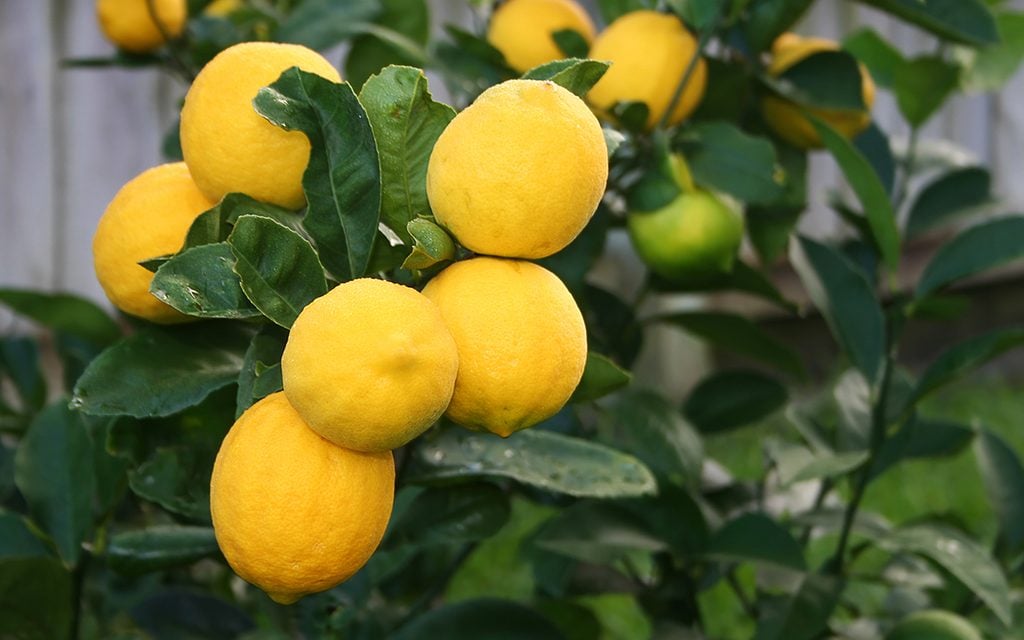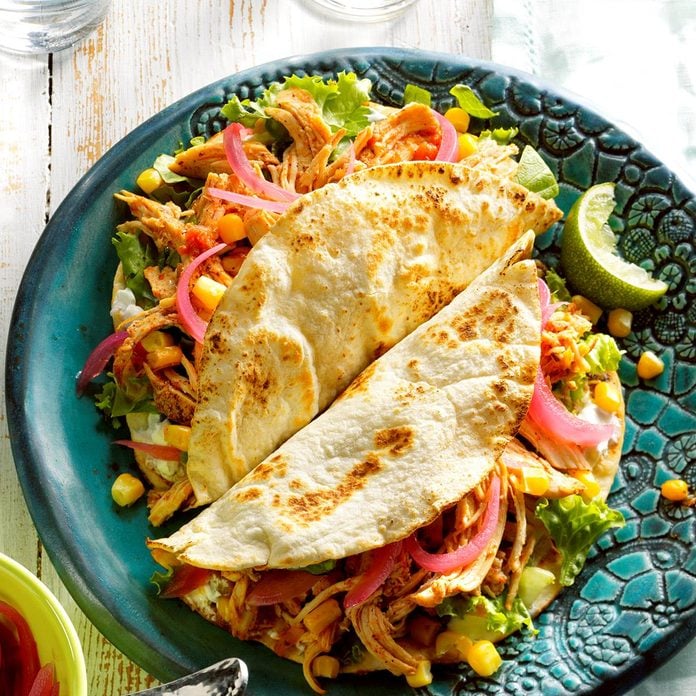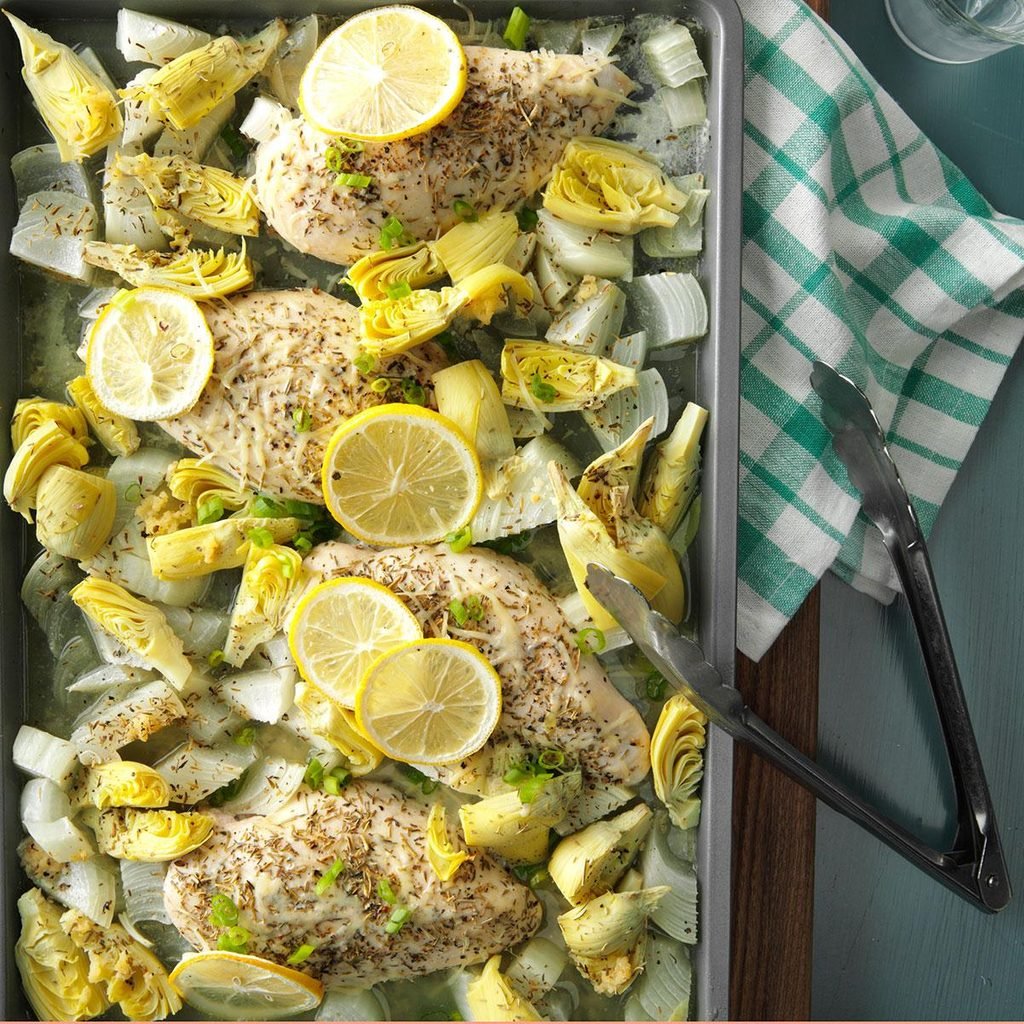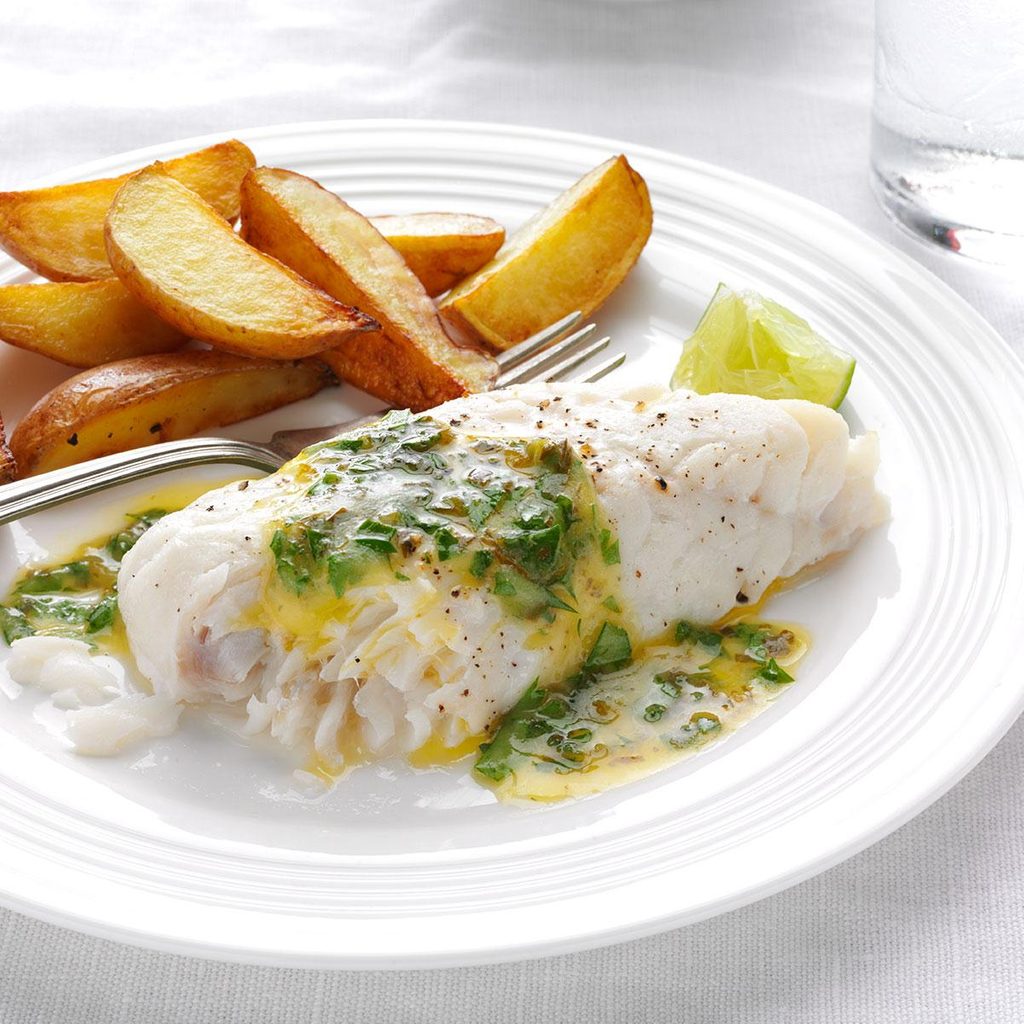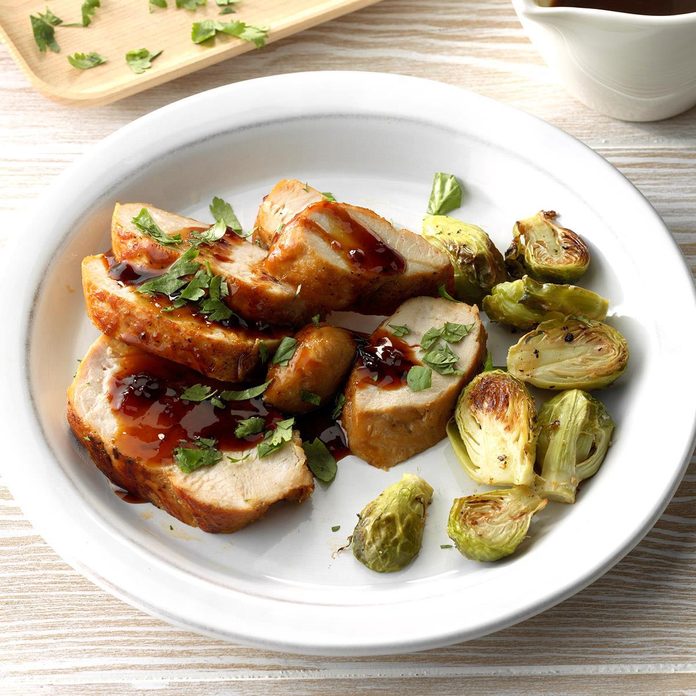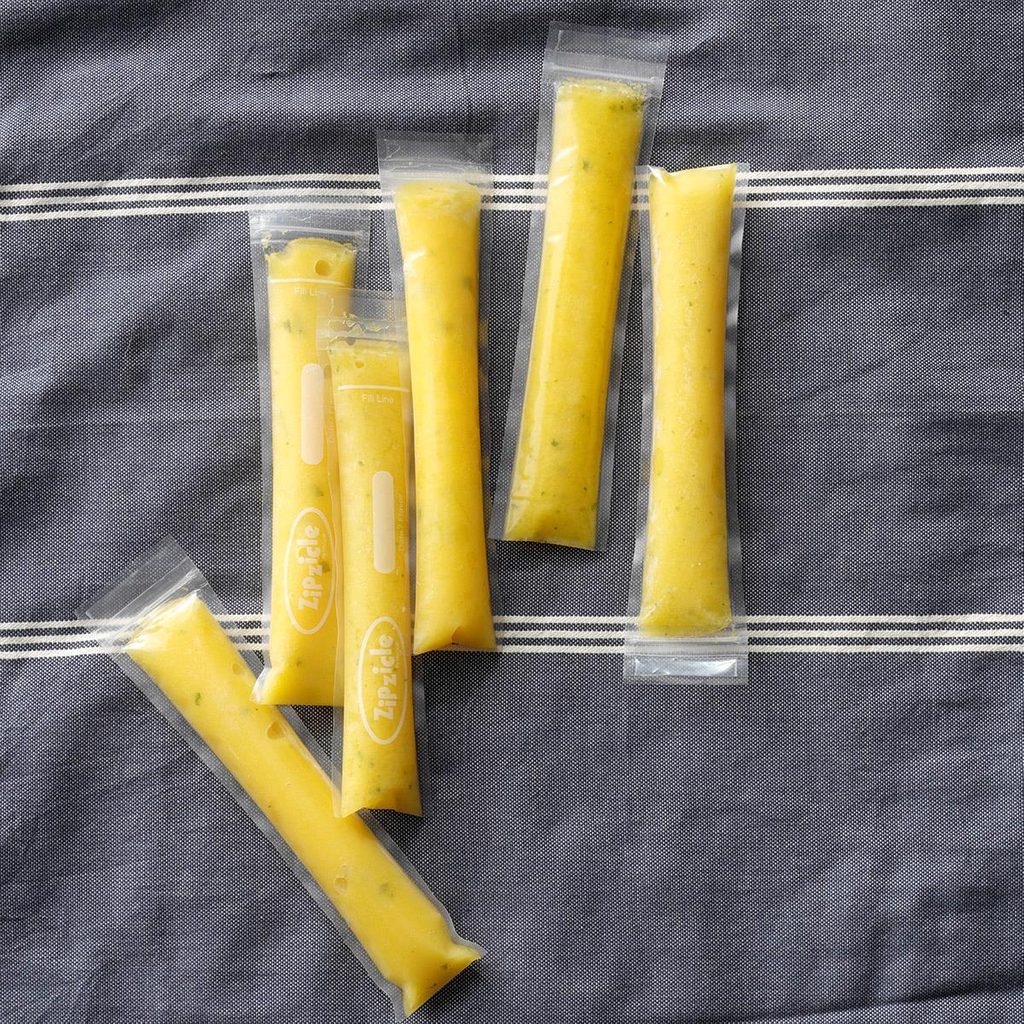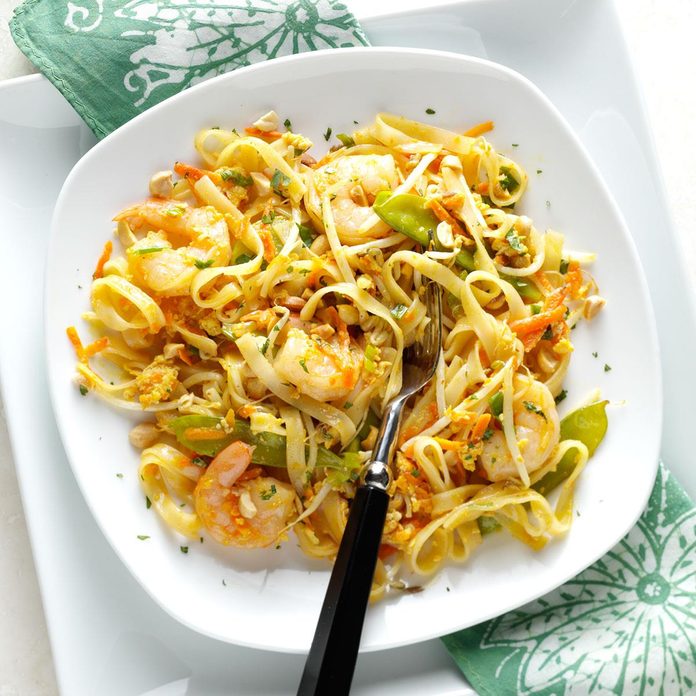Winter might be cold and dreary, but it comes with one benefit: It’s peak citrus season—perfect for winter citrus recipes! Most grocery stores pack their produce displays with juicy pink grapefruit, super sweet tangerines, vibrant blood oranges and Meyer lemons, a lemon-orange hybrid that’s only available a few months of the year.
What makes this variety different from regular lemons, and is it worth its expensive price tag? Here are the juicy details.
What Is a Meyer Lemon?
Meyer lemons are a cross between a mandarin orange and a lemon, which makes them smaller, juicier and sweeter than regular lemons. Instead of being bright yellow, their flesh is a golden color and they produce more juice, too. Meyer lemons also tend to be more round than regular lemons, which are more oval-shaped.
They were originally used as decorative houseplants in China until a U.S. Department of Agriculture employee, Frank Meyer, brought them to the States. Because they have super thin skins, they’re difficult to ship, so they were confined to the citrus belt—California, Florida and Texas—for years.
Today, Meyer lemons are available in many specialty grocery stores and places like Whole Foods, but the extra precaution in shipping makes them more expensive. They also have a very short harvest season, so you’ll likely only find them between December and March.
What Do Meyer Lemons Taste Like?
What makes Meyer lemons so unique is they’re more sweet than tart. They have a tangerine-like flavor and lack the acidity and puckery finish of a regular lemon.
The skin and flesh have an almost herbal aroma, and you don’t need to worry about removing the peels before slicing them; because those thin skins are also edible.
How to Store Meyer Lemons
Just like any other kind of lemon, you’ll want to store your Meyer lemons in the refrigerator. They’ll last for much longer (up to a week) as compared to letting them sit on the kitchen counter. You can keep them in the crisper drawer, on a shelf, or in an airtight container to make them last for as long as possible. Learn more about how to store lemons.
However, if you plan to juice your Meyer lemon, take it out of the refrigerator and let it get to room temperature before you start. Or, you could even toss the whole lemon in the microwave for 10 to 20 seconds to loosen up the membranes in the fruit, which will result in more juice. Make sure you know how to juice a lemon without cutting it, while you’re at it!
Ways to Use Meyer Lemons
You can substitute Meyer lemons in most recipes that call for regular lemons, but their sweet flavor makes them especially well-suited for baked goods and desserts (especially ones made with lemon curd). Try pairing them with fish, like in this lemony grilled salmon fillets recipe, or using them to make salad dressings. If you find yourself with an abundance of this winter fruit, use the extras to make a batch of preserved Meyer lemons (which are the key to Alton Brown’s lemonade, by the way).
However, when a recipe calls for Meyer lemons, don’t substitute regular lemons (typically the Eureka or Lisbon varieties). Since they aren’t as sweet, your recipe will turn out much more sour and acidic than intended—which isn’t always a pleasant surprise when you take that first bite.
Give Meyer lemons a try in one of these Meyer lemon recipes we love or one of our top 10 lemon dessert recipes.
Lemon Tart with Almond CrustOur state produces an abundance of lemons, and everyone is always looking for new ways to use them. This beautiful tart is my delicious solution to the excess-lemon problem! —Lois Kinneberg, Phoenix, Arizona
Slow-Cooker Chicken TacosOur fun, simple recipe is perfect for taco Tuesdays or a relaxing dinner with friends. If we have any leftover filling, I toss it into a garden-fresh taco salad. —Tracy Gunter, Boise, Idaho
Grapefruit Yogurt CakeWe eat grapefruit for breakfast and in winter fruit salads—why not for dessert? Here's a sweet-tart cake that's easy, delicious and one of a kind. It's healthier too! —Maiah Miller, Montclair, Vermont
Rosemary LemonadeA friend suggested I add a sprig of rosemary to lemonade. The herb makes the drink taste fresh and light, and it's a pretty garnish. —Dixie Graham, Rancho Cucamonga, California
Parmesan Chicken with Artichoke HeartsI've liked the chicken and artichoke combo for a long time. Here's my own lemony twist. With all the praise it gets, this dinner is so much fun to serve. —Carly Giles, Hoquiam, Washington
Pink Grapefruit CheesecakeCheesecake in a slow cooker? It's true! I experimented a few times to turn this iconic dessert into a slow-cooker classic. Give it a try. I promise you'll be absolutely amazed by the results! —Krista Lanphier Milwaukee, WI
Orange-Glazed Pork with Sweet PotatoesWhen it's chilly outside, I like to roast pork tenderloin with sweet potatoes, apples and an orange. The sweetness and spices make any evening cozy. —Danielle Boyles, Sparta, Wisconsin
Quince Orange MarmaladeQuince sweetens this marmalade as it simmers and fills the house with its distinctive autumn aroma. It’s great on toast or bagels for breakfast in the morning! Thanks to our Test Kitchen for the recipe.
Limoncello Cream PieAfter a big Christmas dinner, we love the cool refreshment of a frozen lemon pie. Limoncello brings a little sophistication to each smooth, creamy slice. —Jessie Grearson-Sapat, Falmouth, Maine
Lemon-Garlic Cream FettuccineI've been making this lemony pasta for the family for years. It's both simple and indulgent enough to make it a go-to recipe. —Anne Miller, Glenfield, New York
Best Lime TartThis treat is the perfect balance between tart and sweet, and the almonds in the crust are just wonderful. This is one of my husband’s favorite desserts. Enjoy! —Charis O'Connell, Mohnton, Pennsylvania
Haddock with Lime-Cilantro ButterHere in Louisiana, the good times roll when we broil fish and serve it with lots of lime juice, cilantro and butter. —Darlene Morris, Franklinton, Louisiana
Orange Dream Mini CupcakesThe bright taste of these cute cupcakes reminds me and my friends of orange-and-vanilla frozen treats. —Jen Shepherd, St. Peters, Missouri
Lemon-Blueberry Pound CakePair a slice of this moist lemon-blueberry cake with a scoop of vanilla ice cream. It's a staple at our family barbecues. —Rebecca Little, Park Ridge, Illinois
Orange Cream Chiffon CakeLight and luscious, this sponge cake is bursting with orange flavor. It’s the perfect dessert to serve after a filling meal, or with afternoon tea or coffee.—Faith Sommers, Bangor, California
Lime-Chipotle Carnitas TostadasHere's a terrific recipe for your next weeknight dinner. Set out various toppings and garnishes so your family members can customize their own tostadas with the lime-kissed shredded pork. —Jan Valdez, Chicago, Illinois
Creamy Lemon Milk ShakesSeveral different recipes inspired the combination of ingredients I use in these shakes, and I'm glad they did! They're so refreshing. —Carol Gillespie, Chambersburg, Pennsylvania
Chipotle Citrus-Glazed Turkey TenderloinsThis simple skillet recipe makes it easy to cook turkey on a weeknight. The combination of sweet, spicy and smoky flavors from orange, peppers and molasses is amazing.—Darlene Morris, Franklinton, Louisiana
Lemon-Apricot Fruit PopsWith just 31 calories, 4 teaspoons of sugar total and lots of vitamin C, this is one light and refreshing summer dessert everyone can find room for! —Aysha Schurman, Ammon, Idaho
Lemon-Roasted Chicken with Olive CouscousIf you can find preserved lemons, use them instead of the plain lemons for an even more authentic flavor in this North African-inspired recipe. —David Feder, Buffalo Grove, Illinois
French Lemon-Apricot TartIf you like the tang of citrus, you’ll love this lemon tart. The apricot preserves on top add a nice bit of sweetness. —Peggy Lunde, Costa Mesa, California
Bake-Sale Lemon BarsThe recipe for these tangy lemon bars comes from my cousin, who is famous for cooking up farm feasts. —Mildred Keller, Rockford, Illinois
Colorful Shrimp Pad ThaiBright, fresh veggie flavors, a splash of tart lime juice, the crunch of peanuts and a hint of heat make this healthy, beautiful shrimp stir-fry a real standout! —Taste of Home Test Kitchen
Asian Veggie Glass NoodlesMy mom immigrated from the Philippines, so we would often eat Filipino
pancit, a well-known glass noodles dish. I took her version and added my own touches to make it easier and a little healthier. —Jasmin Baron, Livonia, New York
